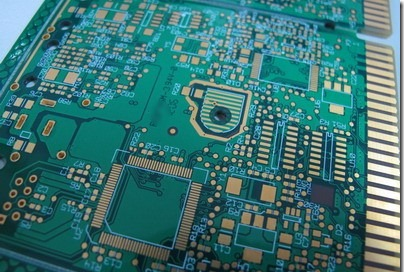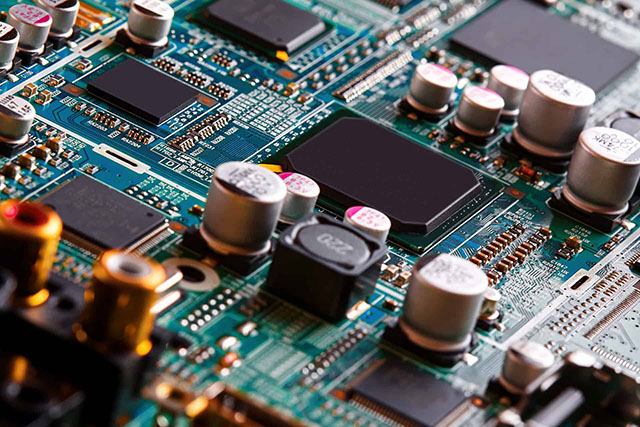 address:201, Factory 6, Longhui Industrial Park, Fuqiao 3rd District, Xinhe Community, Fuhai Street, Baoan District, Shenzhen china
address:201, Factory 6, Longhui Industrial Park, Fuqiao 3rd District, Xinhe Community, Fuhai Street, Baoan District, Shenzhen china
Heatsinks: Details about heatsinks on aluminum-based circuit boards
The most popular form of heat management in modern machinery and technology is using a heat sink. Heat sinks have proven to be affordable yet very effective electronic equipment. However, despite their impressive functions, most engineers tend to overlook the use of this component to prevent power dissipation.
This article will discuss how the heat sink works and introduce the two types of heat sinks.
What is a Heat Sink?
A heatsink is an electronic component that prevents components on a circuit board from frying because of increased heat capacity. It is made of cold plates from materials with good thermal conductivity.
Generally, its components increase and direct the heat flow away from a hot device by widening its working area. After, it expands the fluid that travels across the widened area, raising the heat dissipation rate.

(a computer heat sink)
How Does the Heat Sink Work?
A double-sided heat sink operates by driving away heat from an important component in the heat sink compound. Notably, depending on the heatsink configurations, its operation has four basic steps.
When the source generates heat
A source, in this case, is an electronic system that generates heat. Therefore, this heat needs to leave the system functioning efficiently. So, use a heat spreader and heat paste for heat transfer efficiencies. A heat spreader moves heat from a concentrated area to the heatsink.

(a passive heat sink exchanger.)
When you need to transfer heat farther from the heat sources
Primarily, to perform this process, use heat pipes. However, in direct contact with electrical components that generate heat, ensure you connect a heatsink or heat spreader.
The heat created by these electrical components eventually travels into or around the thermal compound. After that, the heat sink will direct the heat farther from the heat source by natural conduction.
However, the natural conduction process can only be efficient if the heat sink’s materials are good thermal conductive. Thus, aluminum and copper are widely used to improve heat sink performance.

(applying heat paste on the heat sink)
When heat spreads all over, the heat sinks
Through natural conduction, generated heat naturally travels across a temperature gradient. Therefore, this heat leaves an area with high temperatures to lower temperatures.
When heat moves away from the heat sink
Notably, this step depends on the present fluid and the temperature gradient of the heat sink. For example, when the fluid passes across the surface, it utilizes convection and thermal diffusion. As a result, these two processes help to drive away heat to an ambient environment. Then, the temperature gradient will help drive heat farther from the surface.
At all times, the ambient air temperature needs to be cooler than the heat sink. If not, no convection or thermal gradient will take place. This step makes use of the surface area. Consequently, a wider surface area creates convection and thermal diffusion.

(a close-up of an overprinted PCB with an aluminum heat sink)
Type of Heat Sink
Passive heat sinks
These devices heavily rely on natural convection. However, natural convection will only occur if there is an active airflow in the system. The heat sink doesn’t need control systems or any external power supply system to drive the hot air away.
Usually, system devices do not always have airflow. So, this heatsink has lower thermal performance than an active heatsink, especially when the device has excessive heat that needs to be driven away but lacks an airflow.
Active heatsink
This heat sink uses external cooling conditions to increase the fluid flow across the hot surface in electronic systems. For example, when a fan rotates, it sends air across an aluminum foam heat sink. Thus, forcing the unheated air to travel across the surface. Therefore, it increases the thermal gradient, providing efficient cooling by allowing more heat to leave the system.

(an aluminum computer heatsink)
What is the Most Efficient Heat Sink?
A planar fin heatsink made from aluminum or an aluminum substrate is the most commonly used. Aluminum has features that make it the best choice compared to copper plates or silver heat sinks. These features include; easy malleability, affordable, corrosion and electrical resistance, excellent thermal and electrical conductivity, and less weight.

(aluminum CPU heat sinks.)
A Brief Introduction to the Aluminum Substrate.
An aluminum substrate is simply an aluminum alloy. Although aluminum without any coating exhibits excellent corrosion resistance, layers sometimes give added protection in selected thermal environments. In addition, coating aluminum with advanced materials like silver improves its thermal conductivity and aesthetics. Hence it is vital for electronic systems with a lot of heat capacity.

( picture showing both aluminum and copper heat sinks.)
How to use an Aluminum HeatSink
Aluminum robot chassis
A robot chassis holds all the electrical components the robot needs. Therefore, all these components must be as light as possible. Notably, a battery that powers the robot and generates heat among the components in the electrical design details. Therefore, to mitigate the heat, you need a heatsink.
Raspberry Pi
A Raspberry Pi, in normal conditions, operates well because of the software throttling that keeps everything under safe working temperatures. Of course, this is without the involvement of heatsink performance. However, if you are overclocking or incorporating custom software, a quality heatsink is necessary for the electric circuit.
Usually, overclocking brings about device performance loss caused by heat dissipation. Therefore, placing a heatsink over or near the electronic component that produces excessive heat helps to reduce the throttling.

(close-up of a copper heatsink)
Summary
A heatsink has excellent characteristics that make them an easy-to-use, reliable electronic component. We hope this article discussed everything you needed to know about a heatsink.
Moreover, if you’re interested in learning more, contact us!
-
No comment












 tel:+86-18825224069
tel:+86-18825224069 email:
email:





















